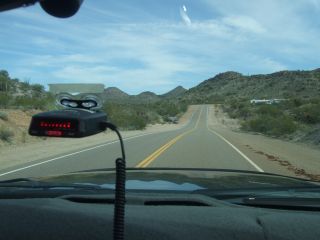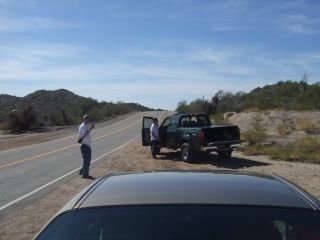 We had three full days to test radar detectors, so we made the most of it. We tested a variety of detectors against 35.5 GHz Ka, 34.7 GHz Ka, 33.8 GHz Ka, K-Band, X-Band, Ku Band, POP, and Spectre III.
The first area we considered using for radar detector testing was plagued by a mysterious Ka signal for the first two days of testing, causing alerts and making it unusable for testing radar detectors (Click here to find out what it was!). But luckily, we had scouted the area thoroughly before the test, and knew of another location a number of miles up the road that would make things very difficult for the detectors (to say the least!). Better yet, there was no radar interference at this location. 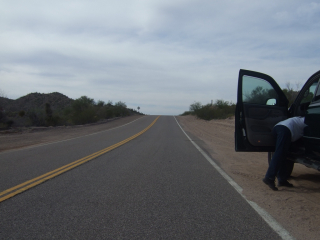 We used the terrain to make things difficult for the detectors, in a similar manner to the way police might. The radar vehicle was stationed at the bottom of a steep hill on one side of a "wash" which fills with water during monsoon season. One of the police officers present verified that this is a location where he would feel comfortable working radar. This course pushed things to the extreme worst-case. If there was a real speed trap at this location, one would have to be very quick on the brakes, even with a high-end radar detector. This test course was purposely chosen to be difficult: it was not chosen to showcase the "true range capabilities" of the detectors. It has been demonstrated that most high-end detectors are capable of many miles of range on a long, straight, flat test course. So remember: small 50-foot differences between detectors tested on our "extreme" course might easily equate to hundreds or even thousands of feet on a much longer, flatter course. 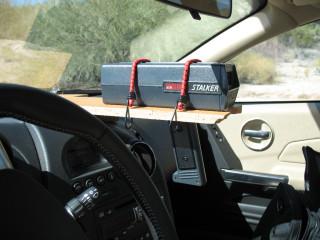
All else being equal, how to the radar detectors stack up against each other in terms of performance? This is what we set out to determine. We tested the detectors by exposing each one to a specific set of controlled conditions.
The test vehicle (a Toyota Tundra) proceeded down the test course and stopped at the first alert from the detector under test. The distance back to the radar vehicle was measured by using an LTI Ultralyte in survey mode to target a known reference point in relation to the radar vehicle. 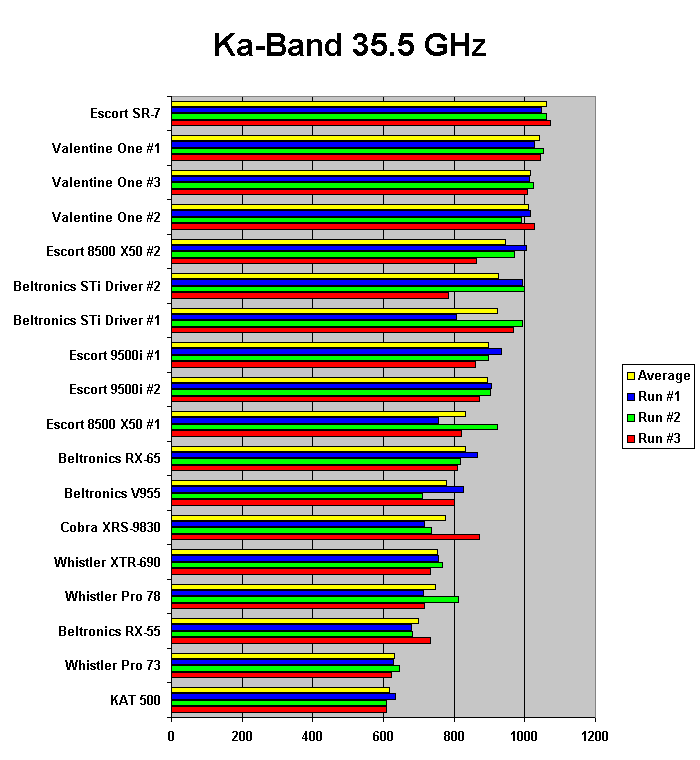 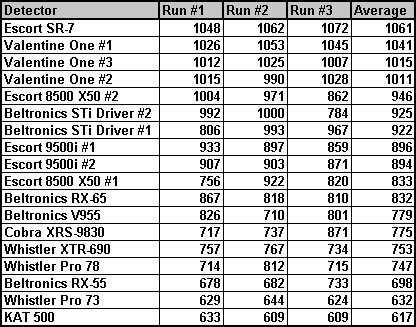 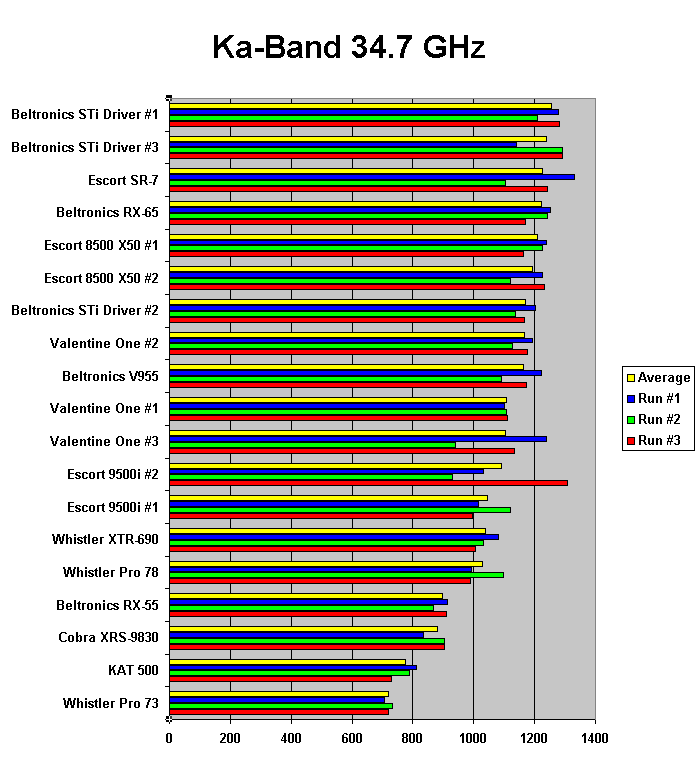 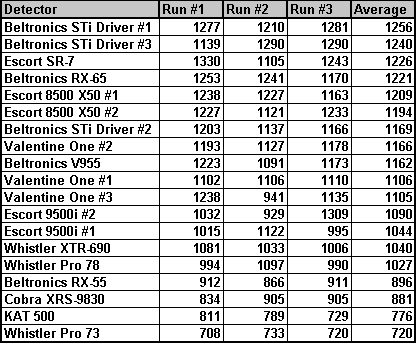 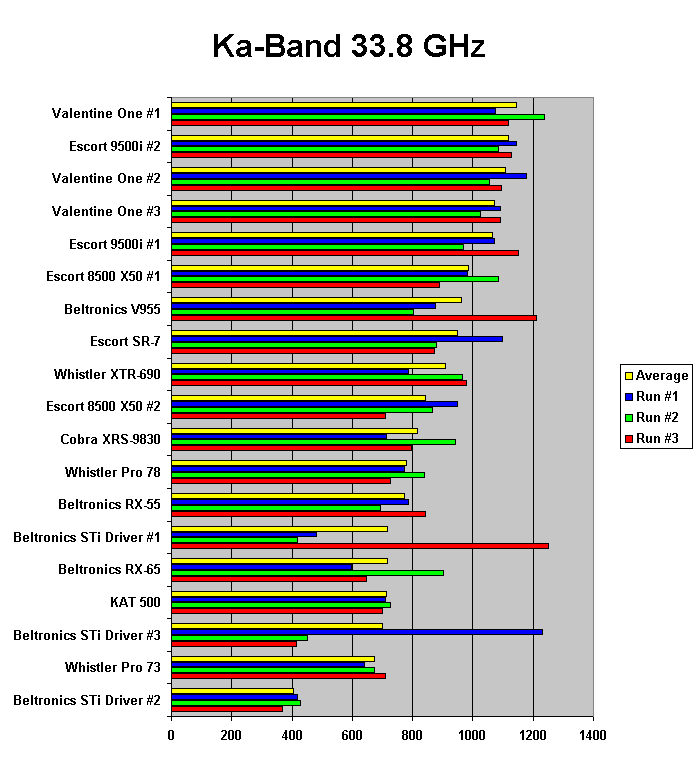 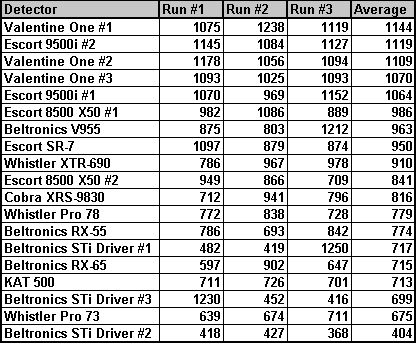 Since 33.8 GHz is the frequency for Ka POP, we decided to try a few runs with POP turned ON (instead of the default of POP turned OFF) to see if that would make a difference. On three runs with POP turned on, we got 348, 384, and 397. We got one of these test runs on video, to watch it CLICK HERE. 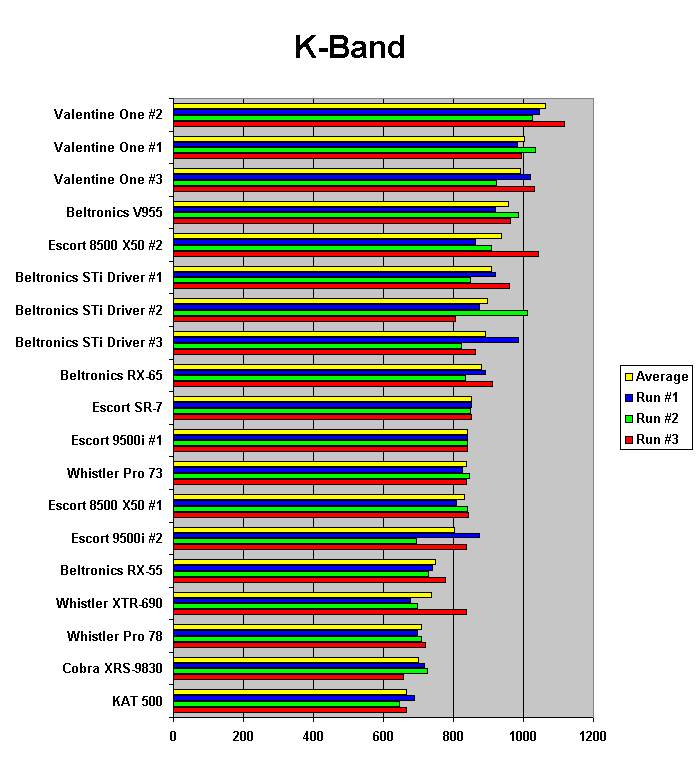 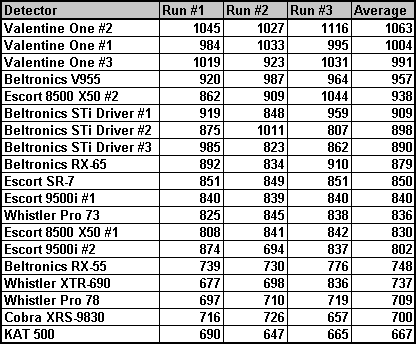 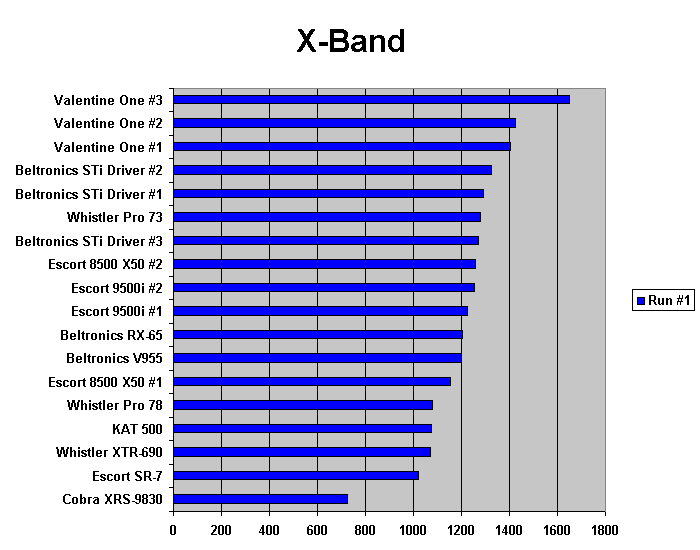 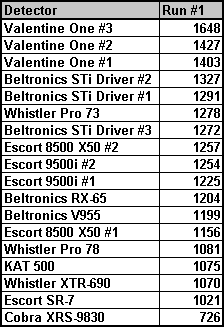 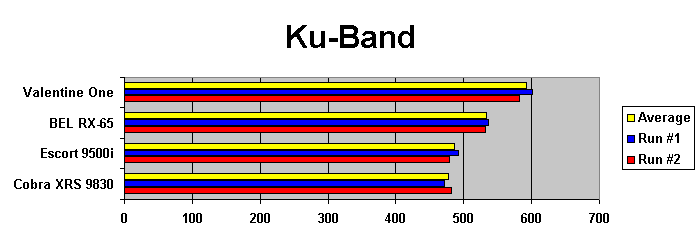  For this test, we chose a straight 1000-foot course near our laser test course. This test was done on the third day, and there was NO Ka radar interference in this area like there was on the first two days. This test included 67ms K-Band POP, which we have never tested before. POP was turned ON for all detectors. 
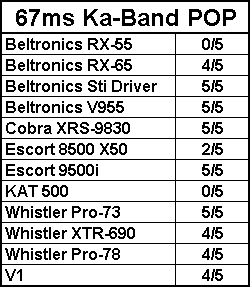 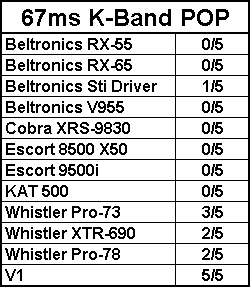  This test was set up to simulate an officer sitting on an on-ramp, clocking passing vehicles in the rear. Selected detectors got three runs against 35.5 GHz Ka. The results are the number of feet of warning before reaching the officer's location.  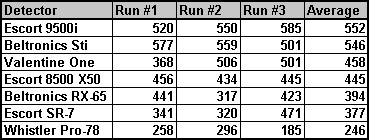  This test was done on a straight stretch near our laser test course. This test was done on the third day, and there was NO Ka radar interference in this area like there was on the first two days. For this test, the gain control on the Spectre was set to maximum. Results are in feet. 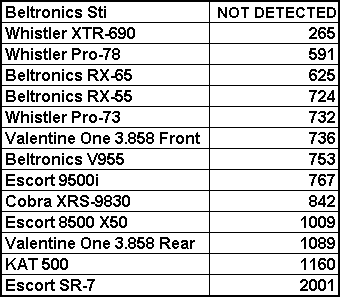
We were surprised at the V1 results, so we decided to try some older versions. Here are the results. 
|


